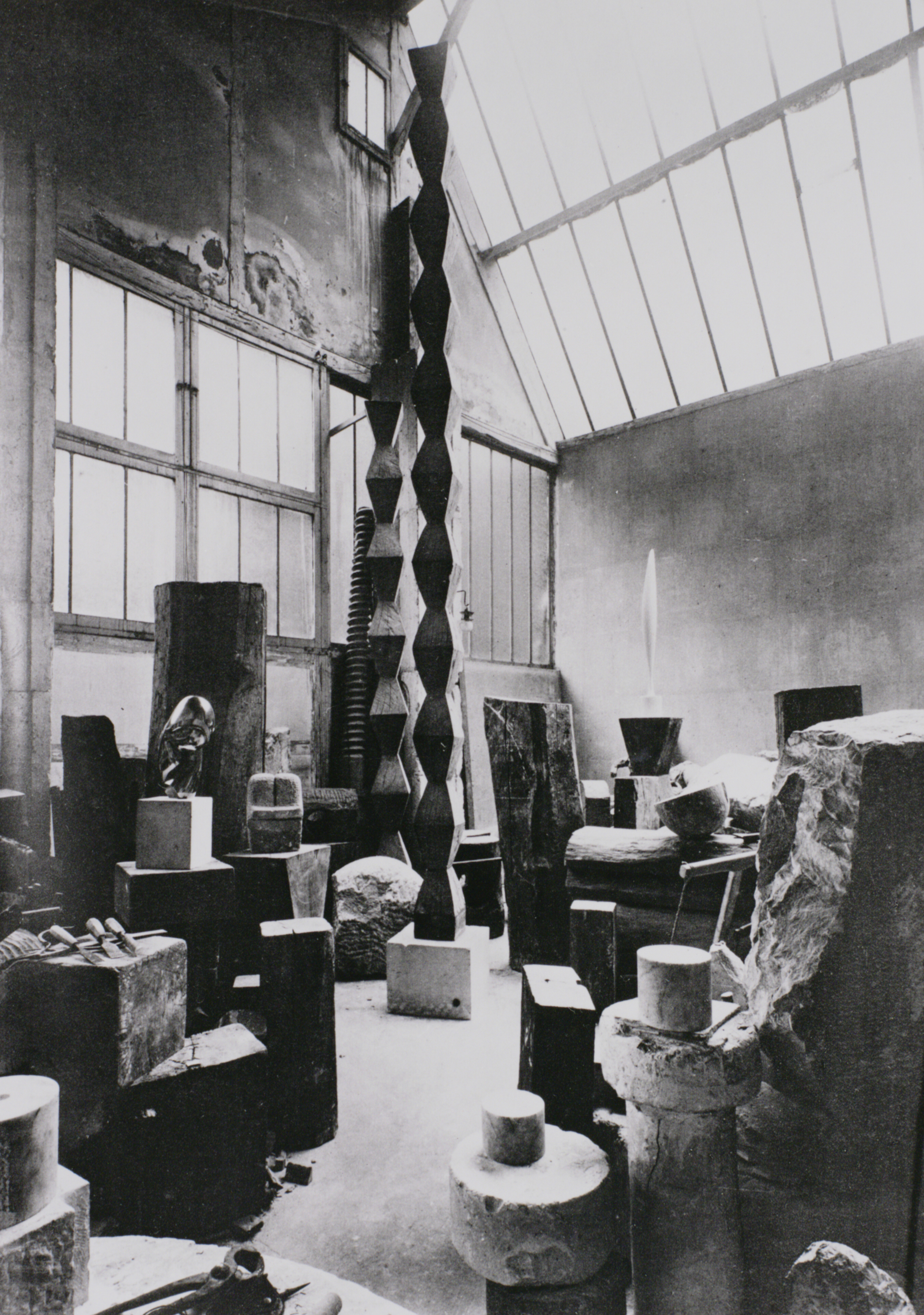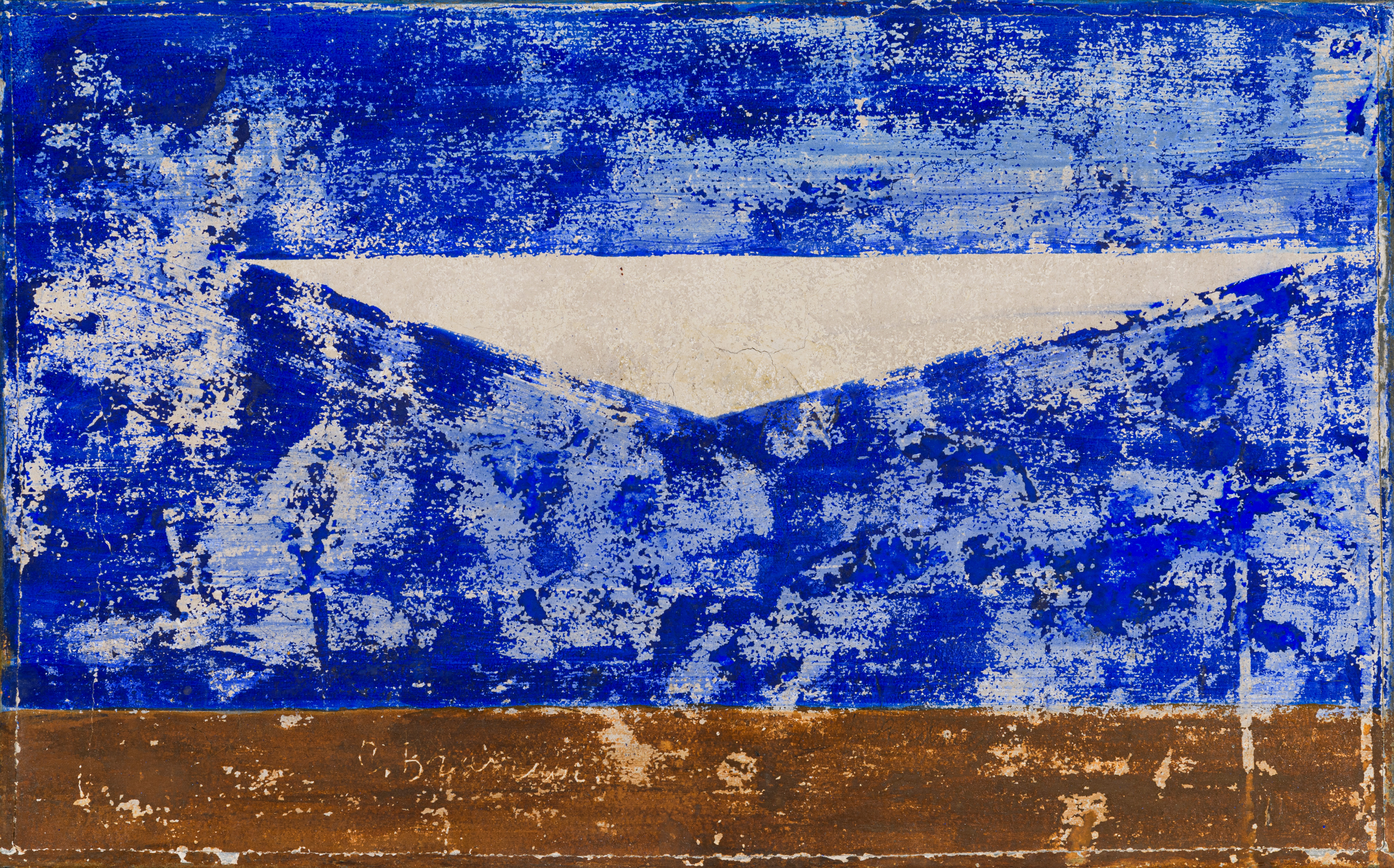BRANCUSI: CARVING THE ESSENCE
HAPPENINGText: Alma Reyes
An interesting painting Standing Boy (c. 1913), this time, connects the egg-shaped head to the body of a young boy. The prominent frontality of the physical figure is complemented with the left and right hands in clenched fists. The deliberate curve of the forehead to the nose is said to suggest a pattern of African sculptures.

Constantin Brancusi, Left to right: Princess X, 1915–16 (cast: 2016), Edition of 8 (#3/8), cast by Susse Fondeur, Paris, France in 2016, Brancusi Estate; Portrait, 1930, Brancusi Estate; Torso of a Young Man, 1924 (cast: 2017), Edition of 8 (#5/8), cast by Susse Fondeur, Paris, France in 2017, Brancusi Estate; Mademoiselle Pogany II, 1925 (cast: 2006), Artizon Museum, Ishibashi Foundation; Sophisticated Young Lady, (Portrait of Nancy Cunard), 1928–32 (cast: 2013), Edition of 5 (#3/5), cast by Susse Fondeur, Paris, France in 2013, Brancusi Estate; Photo: Alma Reyes
The subject of women also appears extensively in Brancusi’s sculptures. The bust of Princess X (1915–16, cast: 2016) in polished bronze is carved in a phallic-like form. Also striking is Mademoiselle Pogany II (c. 1920), modeled after a Hungarian art student the artist met in Paris. The woman’s head is contoured as a small sphere with noticeable almond-shaped eyes. The hair at the back is rendered like a waterfall. Additionally, the image of a liberated woman is instilled in Sophisticated Young Lady (Portrait of Nancy Cunard) (1928–32, cast: 2013). The twisted movement implied by the exaggerated curved back is beautifully expressed.

Constantin Brancusi, View of the Studio, “The Endless Column”, “Mademoiselle Pogany II”, 1925, Tokyo Photographic Art Museum
There are many monochrome photographs on view of Brancusi’s studio based in Montparnasse, Paris and his works, which he took himself. He highlighted the interiors and the large volume of his pieces and materials, such as stone, plaster and wood. The studio is bathed in bright sunlight filtered through the ceiling skylight, illuminating the whiteness of the walls and the artist’s white overalls – a presence imbibing subliminality, almost like a sacred space. Brancusi immersed himself in photography in the middle of 1910s, using it as an extended tool of his sculptures. He assured his pieces were reinterpreted in a tranquil ambiance that would stand as monumental tributes to his accomplishments. The building that housed the studio became a frequent influx of many artists as Brancusi gradually developed connections with legends, such as Duchamp and Isamu Noguchi.

Constantin Brancusi, Bird, 1930, Brancusi Estate
Around the 1910s, Brancusi developed sheer fascination for birds, owing to the Maiastra bird in Romanian folklore. The mythical bird was said to symbolize peace, harmony, and eternal quest for the higher meaning of life. In his art, Brancusi’s birds emanate freedom and ascension to the boundless heavens. These are reflected in Bird in Space (1926, cast: 1982) and the rare fresco The Bird (1930) depicting flight as epitome of liberation.
Brancusi’s bold attempt to defy the realistic form and rephrase nature and mysticism through his elegant masterpieces has greatly impacted artists of later generations.
Brancusi: Carving the Essence
Date: March 30th – July 7th, 2024
Opening Hours: 10:00 – 18:00 (until 20:00 on Fridays except May 3rd)
*Last entry 30 minutes before closing.
Closed on Mondays (except April 29th, May 6th), April 30th, May 7th
Place: Artizon Museum 6F Gallery
Address: 1-7-2 Kyobashi, Chuo-ku, Tokyo
Tel: +81 (0)47 316 2772
https://www.artizon.museum
Concurrently on exhibit: Ishibashi Foundation Collection selected works (5th and 4th floor exhibition rooms) Special Section Exhibition: Takashi Shimizu (4th floor exhibition room)
Text: Alma Reyes
Photos: Courtesy of Artizon Museum, Ishibashi Foundation




